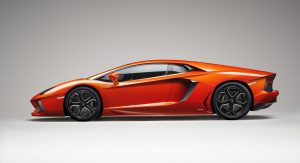NLR joined forces with several Dutch SMEs to develop composite components for Lamborghini’s latest model, the Aventador LP700-4.
In March 2011, the latest Lamborghini was presented at the Geneva Motor Show. One of the special features of this super sports car is that it is largely constructed of composite materials reinforced with carbon fibres. Composites are durable and lightweight, which is why they are frequently applied in aviation and aerospace. But they were also very effectively applied by Lamborghini, contributing to the Aventador’s ability to do 0 to 100 km/h in 2.9 seconds.
NLR teamed up with Lamborghini’s Advanced Composite Research Centre (ACRC) in Sant’Agata, Italy, to develop prototypes for load-bearing composite components. These parts were integrated into the monocoque, which is the composite frame construction that protects the driver and passenger in the event of impact. NLR is currently developing an extra component that will be integrated into the load-bearing assembly, so that the Aventador also meets requirements for the American market.
NLR developed the composite components with the aid of a special braiding technology. Eurocarbon in Sittard, in the south of the Netherlands, applied the carbon fibres (the braid), after which resin was injected between the fibres using the Resin Transfer Moulding machine at NLR, thus creating the composite. In the past, NLR has used this technology in the development and manufacturing of composite landing gears. Owing to this partnership, Eurocarbon is now involved in the serial production of the composite components for the Aventador.


